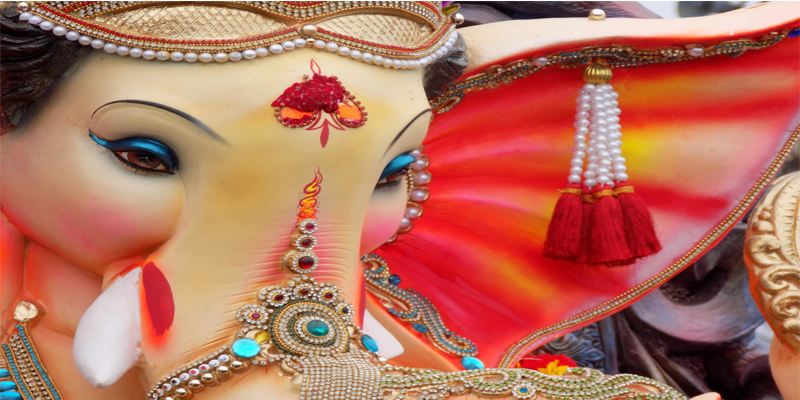Ganesh is usually shown in sculpture accompanied by or riding a rat. Since rats are seen as being capable of gnawing their way through most things, the rat symbolizes Ganesh’s ability to destroy every obstacle.
Ganesh’s name literally means “Lord of Gana.” Ganesh was entrusted by Shiva with the leadership of the Ganas, Shiva’s dwarfish, rowdy retinue, in compensation for the loss of his human head.
Custom Large Dancing Ganesh Garden Statue
In sculpture the position of Lord Ganesh’s trunk has a symbolic meaning. If the trunk turns to the Ganesh’s left, that is the direction for success in the world. It is a position associated with grihastas, or householders. To his right, the trunk represents moksha, good for renouncing the world. When one chooses a Ganesh sculpture that is proper for their own spiritual path the trunk position is one thing that is good to keep in mind.
Ganesh is often displayed playing a musical instrument. Much like Krishna, Ganesh affirms life by celebrating in it’s pleasures and beauty.
How Ganesh came to have the head of an elephant is explained in various stories. One account of his birth is that Parvati formed him from the rubbings of her body so that he might stand guard at the door while she bathed. When Shiva approached, unaware this was his son, he was enraged at being kept away from his wife and proceeded to lop off the head of Ganesh.
To ease Parvati’s grief, Shiva promised to cut off the head of the first living thing he saw and attach it to the body. That creature was an elephant. Ganesh was thus restored to life and rewarded for his courage by being made lord of new beginnings and guardian of entrances. A prayer to Ganesh is invariably accompanied by smashing a coconut, symbolic of smashing the undesirable forces inherent in oneself.


Leave A Comment